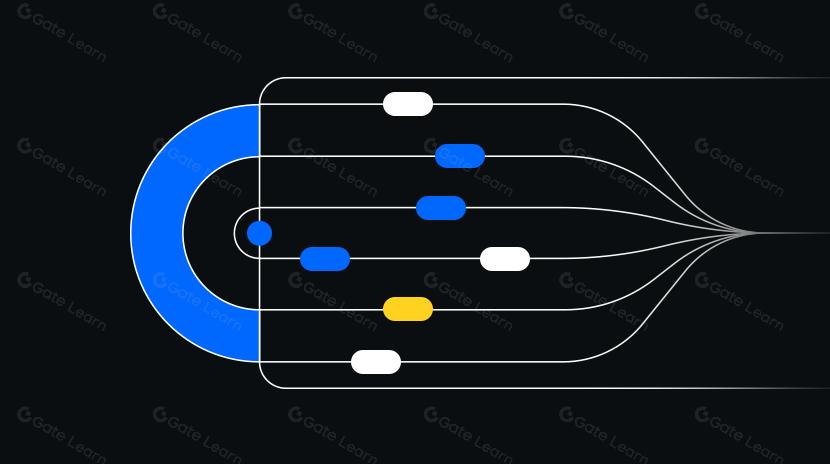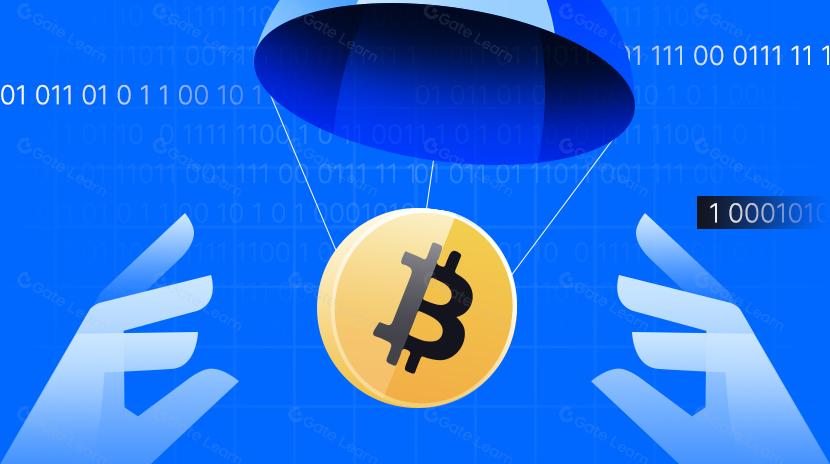Gate Research: BlackRock's BUIDL Fund Hits Record TVL; Ripple Expands Crypto Payments to Middle East with Dubai License
Abstract
- This week, BTC price tested the $78,500 mark twice, while ETH dropped to $1,750.
- Mentions of blockchain-related terms in SEC filings reached an all-time high in February.
- Securitize partnered with RedStone to enhance RWA data support, driving the advancement of on-chain finance.
- Ripple obtained a Dubai license, expanding its crypto payment services to the Middle East.
- BlackRock’s BUIDL fund’s TVL surpassed $665 million, setting a new record.
- Soneium’s on-chain transaction volume reached $3.27 million, marking a 7-day growth of nearly 179%.
- Morph Chain’s TVL surged to $78 million, with BulbaSwap contributing over $71.38 million.
Market Analysis
Review and Insights
- BTC — This week, BTC’s price dipped to around $78,500 before rebounding to $95,000. After touching the descending trendline, selling pressure intensified. On March 11, BTC retested the bottom, forming a short-term support level. The MACD curve has briefly crossed above the trendline, and overall trading volume has increased compared to previous levels. If BTC can hold the support level and break above the descending trendline, it may see a new wave of upward momentum. [1]

- ETH — ETH experienced a consistent downward trend this week, with the lowest price hitting approximately $1,750. Its overall movement followed BTC but showed weaker performance. While trading volume has slightly recovered, a downward channel has formed on the 4-hour chart, with no clear bottom signal yet. Further declines may be expected. [2]

- Altcoins — Over the past seven days, altcoins experienced relatively significant declines around March 10, with the overall market showing weakness. Strong-performing altcoins saw weaker gains compared to the previous week. However, Gaming Blockchains, Modular Blockchain, and Tokenized Assets sectors showed relatively strong performance or resilience. Their market capitalization increased by approximately 20.1%, 2.5%, and -1.5%, respectively, with several related tokens seeing notable gains. [3]
- Option Market — As of 08:00 AM (UTC+8) on March 13, 2025, the total open interest in the BTC options market stood at $33.426 billion, slightly lower than the previous week’s $35.775 billion. Notably, the nominal value of options expiring on March 14 increased to $3.699 billion. [4]
- Macro Data — On the evening of March 12, the U.S. announced its unadjusted February CPI annual rate at 2.8%, below the expected 2.9%. This lower-than-expected result put downward pressure on the U.S. dollar, leading to a rebound in most cryptocurrency assets. [5]
- Stablecoins — The total market capitalization of stablecoins increased by 1.25% this week, reaching $281.4 billion, indicating further inflow of funds from off-exchange sources. [6]
- Gas Fee — Over the past seven days, Ethereum’s average gas fee dropped to 0.55 Gwei, reflecting decreased network activity. [7]
Trending Concepts
This week, Bitcoin’s price oscillated between $78,500 and $95,000, while altcoin sectors showed mixed performance. According to CoinGecko data, three sectors stood out: Gaming Blockchains, Modular Blockchain, and Tokenized Assets. These sectors displayed notable strength or stability, with their 7-day market capitalizations changing by +20.1%, +2.5%, and -1.5%, respectively. [8]
Gaming Blockchains - This sector combines blockchain technology with the gaming industry, featuring projects that leverage NFTs, token incentives, and decentralized governance. These innovations provide players with true ownership of digital assets, transparent transactions, and new interactive experiences.
The Gaming Blockchains sector rose by 20.1% over the past seven days, reaching a market cap of $4.216 billion with a 24-hour trading volume of $429 million. Within this sector, the token XTER surged 31.3% in the past week. [9]
Modular Blockchain - This sector represents a collection of modular blockchains. Modular blockchains are designed to separate core blockchain functions into distinct modules or layers, with each module dedicated to handling specific tasks independently.
The Modular Blockchain sector’s market cap increased by 2.5% this week, reaching approximately $2.596 billion, with a 24-hour trading volume of $309 million. Among the sector’s tokens, TIA rose 8.4% over the past seven days. [10]
Tokenized Assets - This sector refers to a collection of tokenized assets. Tokenized assets are real-world assets converted into digital tokens on the blockchain, enhancing liquidity, transparency, and divisibility. Using smart contracts, these assets can be traded and managed on decentralized networks, reducing intermediary costs and improving transaction efficiency. Tokenized assets encompass areas such as real estate, art, and stocks, aiming to lower entry barriers and enable broader investor participation in global markets.
The Tokenized Assets sector declined by 1.5% this week, demonstrating relative resilience. Its market cap is approximately $3.048 billion, with a 24-hour trading volume of $136 million. Within this sector, the token Lympid increased by 7.7% in the past seven days. [11]
Top Performers
According to CoinGecko data, the following are the top-performing tokens over the past 7 days: [12]

IP (Story) — Up approximately 16.6%, Market Cap: $1.586 billion
Story is a Layer 1 blockchain designed specifically for the smart tokenization of intellectual property (IP). By bringing IP assets worth $61 million, including scientific, creative, and brand IP, on-chain, Story enables users to programmatically set monetization terms for agents and individuals using their IP while ensuring automated management.
The recent surge in IP’s price is attributed to its collaboration with Orderly Network and Stability AI, which attracted increased investor interest. Additionally, Story launched a bug bounty program with rewards up to $600,000, covering blockchain, smart contracts, and application layers to enhance network security. This move signaled “mainnet technology maturity” to the market, boosting investor confidence in asset security and reducing sell-off concerns. [13]
TIA (Celestia) — Up approximately 8.7%, Market Cap: $1.98 billion
Celestia is a blockchain network designed with modular architecture, separating the data availability (DA) layer from the consensus and execution layers. This design offers an out-of-the-box, pluggable DA solution, allowing developers to seamlessly integrate it into existing blockchain ecosystems. This enhances network scalability, interoperability, and security, providing a robust foundation for building efficient Web3 applications.
The recent rise in TIA’s price is largely attributed to its undervalued market cap compared to other modular blockchains, prompting expectations of a price catch-up. Additionally, the early airdrop-induced selling pressure has eased. With a staking APY of nearly 20%, circulating supply has decreased, further supporting price growth. Moreover, Celestia’s unique modular DA network structure and potential collaborations with Polygon, Avalanche, and others have strengthened investor confidence, driving TIA’s upward momentum. [14]
ENA (Ethena) — Up approximately 7.1%, Market Cap: $1.96 billion
Ethena is an Ethereum-based synthetic stablecoin protocol that offers a crypto-native solution for currency independent of traditional banking infrastructure. It also introduces a global, USD-denominated savings tool known as the “Internet Bond”.
The recent price increase for ENA is driven by favorable macro market conditions and growing demand for DeFi solutions, particularly for synthetic stablecoins. As global regulatory uncertainties rise, traditional fiat-backed stablecoins like USDT and USDC face compliance risks. Consequently, the market is seeking decentralized, censorship-resistant alternatives.
Ethena’s USDe synthetic dollar stands out by operating independently of the banking system while offering an “Internet Bond” feature that provides yields to holders. As the DeFi ecosystem rebounds, investor interest in stable assets that offer returns and mitigate regulatory risks has increased, fueling demand for ENA and the broader Ethena ecosystem. [15]
Weekly Spotlights
Hot Topic Review
Blockchain-Related Terms in SEC Filings Hit Record High in February
Mentions of blockchain-related terms in U.S. Securities and Exchange Commission (SEC) filings reached a record high in February, with the EDGAR database logging over 5,000 mentions. This rising trend has persisted since mid-2023, coinciding with a major shift in the SEC’s regulatory approach to the crypto industry. After the January presidential transition, Acting Chairman Mark Uyeda took office and introduced significant policy changes. Under Uyeda’s leadership, the SEC has concluded investigations into several major crypto companies, including Uniswap, Coinbase, Yuga Labs, Kraken, and Gemini—marking a clear shift from the “enforcement-driven” regulatory approach of former chairman Gary Gensler.
The increase in blockchain-related mentions in SEC filings, alongside this regulatory shift, has had several positive implications for the crypto industry. These include reduced regulatory pressure, heightened market confidence, and expanded innovation opportunities. Moreover, this shift offers an opportunity for further adjustments and improvements in regulatory policies, contributing to the continued growth of the global crypto industry. [16]
Securitize Partners with RedStone to Enhance RWA Data Support and Drive On-Chain Finance Growth
Securitize has announced a partnership with blockchain oracle service provider RedStone to provide accurate pricing data support for its tokenized real-world asset (RWA) products, facilitating further growth in the RWA sector. This collaboration will support key products, including the BlackRock USD Institutional Digital Liquidity Fund (BUIDL) and the Apollo Diversified Credit Tokenized Fund (ACRED).
Securitize and its subsidiaries are registered with the U.S. Securities and Exchange Commission (SEC). Through partnerships with top asset management institutions such as Apollo and BlackRock, Securitize is dedicated to advancing the tokenization of global assets on the blockchain.
This collaboration with RedStone aims to effectively improve the liquidity and transparency of tokenized assets, further promoting the adoption of real-world assets (RWA) within the decentralized finance (DeFi) ecosystem. The partnership not only reinforces Securitize’s leadership in the RWA sector but also enhances its platform’s reliability and market competitiveness, marking the growing maturity of traditional financial asset tokenization. For RedStone, this partnership significantly expands its influence in the RWA space, further strengthening its role as a key data provider for the sector. [17]
Ripple Secures Dubai License, Expanding Crypto Payment Services into the Middle East
Ripple has recently obtained a license from Dubai’s regulatory authority, allowing the company to provide crypto payment services in the United Arab Emirates (UAE). This move signifies Ripple’s proactive expansion into the Middle East market and reflects growing recognition from local regulators. The license not only grants Ripple the legal right to operate crypto payment services but also strengthens its efforts to expand use cases on a global scale. Ripple’s licensing success in Dubai highlights the region’s progressive regulatory stance toward cryptocurrency payments, signaling the development of a structured regulatory framework.
This development is expected to enhance crypto asset liquidity across the region while attracting greater interest from financial institutions and businesses exploring blockchain technology for payments, settlements, and related services. Beyond Ripple’s immediate expansion opportunities, this move also offers valuable insights for other cryptocurrency firms seeking to establish a presence in regulated markets. As the UAE and other Middle Eastern countries continue to refine their regulatory frameworks, the market is likely to witness more innovative financial products. Ripple’s successful licensing serves as a positive signal for the global crypto payment industry, promoting greater legitimacy, security, and deeper integration between digital assets and traditional finance. [18]
Security Incident
Hacker Reaches Agreement with 1inch, Returns Majority of Stolen Funds
On March 5, decentralized exchange aggregator 1inch experienced a hacking incident in which a hacker exploited a vulnerability in the Fusion v1 smart contract, successfully stealing approximately $5 million. According to the latest reports, the 1inch team responded swiftly and engaged in negotiations with the hacker. As a result, an agreement was reached where the hacker agreed to return the majority of the stolen funds, retaining a portion as a bug bounty reward.
According to a 1inch security incident report published by Decurity, the attack primarily affected accounts using outdated versions of the parser, while regular user funds remained unaffected. 1inch has since urged developers utilizing these older parsers to promptly conduct audits and update their smart contracts to prevent similar incidents in the future.
The incident drew significant attention across the DeFi sector. While the partial recovery of funds has helped restore some market confidence, the event once again highlights the ongoing security risks in the DeFi ecosystem. This is not the first time such a fund recovery has occurred. In previous incidents, both Euler Finance and Curve Finance faced similar attacks and successfully recovered part of their stolen assets through negotiations. Moving forward, DeFi projects will need to enhance security audits and strengthen bug bounty programs to mitigate potential risks. [19]
Project Highlights
Modular Blockchain Network Hemi Officially Launches Mainnet
On March 13, Hemi announced the official launch of its mainnet, which now supports a range of features including token swaps, trading, staking, NFT minting, and various DeFi applications. Hemi is a blockchain project focused on high-performance public blockchains and the DeFi ecosystem, dedicated to providing a low-cost, high-throughput financial infrastructure. The mainnet supports smart contract execution and integrates multiple DeFi applications, aiming to enhance user transaction experiences and improve on-chain asset management efficiency. A key innovation in the Hemi network is the introduction of the Hemi Virtual Machine (hVM). The hVM integrates a full Bitcoin node within the Ethereum Virtual Machine (EVM), allowing developers to utilize familiar tools while leveraging both Bitcoin and Ethereum functionalities simultaneously. With hVM, smart contract developers can directly access the Bitcoin state, unlocking new Bitcoin-based DeFi applications such as staking, lending markets, and more.
The launch of Hemi’s mainnet marks a significant step forward in its DeFi ecosystem, offering users a more efficient and convenient on-chain financial experience. Moving forward, Hemi plans to expand its ecosystem further by collaborating with additional DeFi projects, driving blockchain financial innovation and adoption. [20][21]
Data Highlights
BlackRock’s BUIDL Fund TVL Surpasses $665 Million, Reaching a Record High
The BlackRock USD Institutional Digital Liquidity Fund (BUIDL) has achieved a total value locked (TVL) of over $665 million, marking a new all-time high. As a blockchain-based tokenized fund, BUIDL is designed specifically for institutional investors, providing an on-chain USD liquidity management solution. The fund is managed by BlackRock, with custodial services provided by BNY Mellon and subscriptions facilitated by Securitize. BUIDL is exclusively available to qualified investors. The BUIDL fund invests 100% of its assets in cash, U.S. Treasury securities, and repurchase agreements, ensuring low risk and high liquidity. This structure allows investors to earn returns while holding tokenized assets.
Recent developments have contributed to BUIDL’s TVL surge. A loosening regulatory environment and progress in the regulatory compliance of real-world assets (RWA) have boosted investor confidence. Additionally, a U.S. stock market pullback has reduced risk appetite, prompting capital to flow into low-risk, high-liquidity assets like BUIDL, further driving its growth. As BUIDL’s scale continues to expand, it is expected that more institutional-grade tokenized funds will enter the market, accelerating the development of on-chain asset management. Furthermore, BUIDL’s success may encourage more DeFi platforms to integrate RWA assets, fostering the continued maturation of the on-chain finance ecosystem. [22]

Soneium On-Chain Trading Volume Reaches $3.27 Million, Up Nearly 179% in 7 Days
Soneium’s 24-hour trading volume recently surpassed $3.27 million, with total weekly trading volume reaching $12.39 million, reflecting a 178.95% increase over the past seven days. Among these transactions, Velodrome contributed over 70% of the total volume, playing a crucial role in the Soneium ecosystem. Velodrome is a core DEX (decentralized exchange) in the Optimism ecosystem that operates on the ve(3,3) tokenomics model. This model incentivizes liquidity providers through voting mechanisms, positioning Velodrome as a dominant force across multiple Layer 2 ecosystems. With its deep liquidity and efficient trading mechanics, Velodrome has become a key driver of Soneium’s recent surge in trading activity.
The spike in activity follows Sony’s announcement of a partnership with LINE, introducing four new applications: Sleepagotchi, Farm Frens, Puffy Match, and Pocket Mob. This collaboration significantly boosted on-chain activity on the Soneium network, further fueling the surge in Velodrome’s trading volume. This trend highlights the growing influence of traditional tech giants in accelerating the adoption of Web3. Sony’s strategic move demonstrates its efforts to deeply integrate DeFi and social applications within the Layer 2 ecosystem, broadening Web3’s user base and advancing DeFi sector development. As more traditional enterprises enter the space, Velodrome, as the liquidity hub of the Soneium ecosystem, is expected to attract more protocol integrations, further solidifying its position as an important player in the Layer 2 landscape. [23]

Morph Chain TVL Surges to $78 Million, with BulbaSwap Contributing Over $71.38 Million
According to DefiLlama data, Morph Chain’s total value locked (TVL) saw a significant surge this week, surpassing $78 million at its peak. Among this, BulbaSwap contributed $71.38 million, emerging as the primary driver behind the TVL increase. Morph Chain is a permissionless, EVM-compatible Layer 2 solution that integrates Optimistic Rollup and ZK Rollup technologies. It provides an efficient and user-friendly environment for developing financial, gaming, social media, and entertainment dApps. As the core DEX in the Morph ecosystem, BulbaSwap played a pivotal role in this growth. Its liquidity mining incentives and low transaction fees attracted a significant influx of users and capital, further driving Morph Chain’s TVL increase.
Another key factor behind the TVL surge is Morph Chain’s recently launched “FTX Survivor Program and Bonus.” This initiative targets users affected by the FTX collapse, allowing them to migrate their assets to Morph Chain and receive up to 5x rewards on their transferred funds. This move significantly boosted market sentiment, triggering substantial capital inflows. This initiative has not only increased Morph’s prominence in the Layer 2 sector but has also attracted investors who were previously hesitant about the DeFi ecosystem.[24]

Market Opportunities
Project Airdrops
Endless
Endless is a distributed cloud protocol designed to provide efficient and secure infrastructure for Web3 application development. The platform emphasizes privacy protection, asset security, and data sovereignty, offering crucial support for building decentralized applications (DApps). What makes Endless unique is its AI integration feature, which allows developers to seamlessly incorporate AI capabilities into DApps without requiring extensive technical expertise — even enabling the creation of on-chain AI agents.
Currently, Endless is hosting an EDS token airdrop event valued at $1 million. Users can participate via the Luffa mobile app without incurring any gas fees, significantly lowering the entry barrier for Web3 users. [25]
How to Participate:
- Download the Luffa mobile app, register, and create an account. [26]
- Access the task system via the Luffa app or official Endless channels.
- Complete social tasks and perform daily check-ins to qualify for rewards.
Note:
The airdrop program and participation methods are subject to change. Users are advised to follow Endless’ official channels for the latest updates. Additionally, users should exercise caution, be aware of potential risks, and conduct thorough research before participating. Gate.com does not guarantee the distribution of future airdrop rewards.
Weekly Fundraising Report
This week, several projects successfully completed fundraising rounds, covering a wide range of sectors including security infrastructure, DeFi, and blockchain infrastructure. According to RootData, a total of 11 projects announced funding rounds between March 8 and March 14, raising over $140 million in total. Below are the top three fundraising highlights: [27]
Mesh - On March 11, Mesh completed an $82 million Series B funding round to expand its stablecoin-based payment and settlement network and accelerate innovation in global payment infrastructure. Paradigm led the round, with participation from ConsenSys, QuantumLight, Yolo Investments, Evolution VC, Hike Ventures, Opportuna, and AltaIR Capital.
Mesh aims to build an efficient and secure stablecoin payment and settlement network that leverages decentralized architecture to improve transaction speeds and reduce costs. This network is designed to facilitate cross-border payments and financial transactions on a global scale. The funding will support Mesh in expanding its partner ecosystem, enhancing technical development, and promoting stablecoin adoption across mainstream finance and the Web3 space.
Axelar - On March 11, Axelar announced the successful completion of a $30 million strategic AXL token sale to support the growth of its cross-chain interoperability ecosystem. This token sale attracted participation from prominent crypto investment firms, including Arrington Capital, Distributed Global, Electric Capital, Laser Digital, C² Ventures, Plassa Capital, and Wagmi Ventures.
Axelar is a decentralized cross-chain communication network designed to provide seamless interoperability across the Web3 ecosystem, enabling assets, smart contracts, and data to move freely between different blockchains. The newly secured funding will help Axelar expand its cross-chain infrastructure, enhance security and scalability, and integrate more Web3 applications into its protocol — ultimately improving cross-chain ecosystem liquidity and connectivity.
Ethena - On March 12, Ethena announced a successful $16 million strategic funding round, led by MEXC Ventures, aimed at supporting the growth of its stablecoin protocol and DeFi ecosystem.
Ethena specializes in decentralized stablecoins and on-chain yield products. Its core product, USDe, employs a delta-neutral strategy that hedges risks in the derivatives market to maintain stablecoin value anchoring while providing sustainable yields. This funding will be used to expand Ethena’s stablecoin protocol, improve liquidity, and promote the integration of its solutions with more DeFi applications. As the DeFi ecosystem continues to grow, Ethena plans to strengthen USDe’s presence in on-chain payments, savings, and financial derivatives, solidifying its competitive edge in the DeFi landscape.

What to Watch Next Week
Token Unlock
According to Tokenomist data, several significant token unlock events are scheduled for the upcoming week, with a total unlocked value exceeding $147 million. [28]

Here are the top 3 unlocks.
FTN is set to unlock approximately 20 million tokens on March 18, 2025, at 12:00 AM (UTC+0). This represents 4.66% of FTN’s circulating supply and is valued at around $79.8 million. Given that FTN’s recent average daily trading volume is roughly $5,100, this unlock could have a notable impact on its market price.
ARB is scheduled to unlock approximately 92.65 million tokens on March 16, 2025, at 1:00 AM (UTC+0). This represents 2.1% of ARB’s circulating supply, valued at approximately $32.29 million. With ARB’s recent daily trading volume averaging $201 million, the impact of this unlock is expected to be minimal.
STRK will unlock around 64 million tokens on March 14, 2025, at 12:00 AM (UTC+0), accounting for 2.33% of its circulating supply and valued at roughly $10.7 million. Given STRK’s recent average daily trading volume of approximately $45 million, the unlock is also anticipated to have a limited effect on its price.
Crypto Calendar
Next week (March 14-20, 2025) will feature several key events that are expected to have a significant impact on the cryptocurrency market, the global economy, and the energy sector. Linea is expected to upgrade its USDC bridge to native USDC on March 16, during which USDC.e bridging will be paused and conversion will be completed within 1-2 weeks, requiring no action from users or developers.[29] On March 14, 2025, the U.S. will release the preliminary 1-year inflation expectations for March.[30] On March 17, 2025, the U.S. will announce February’s retail sales month-over-month rate.[31] On March 19, 2025, the U.S. will release EIA crude oil inventory data (in 10,000 barrels) for the week ending March 14.[32] On March 20, 2025, the U.S. will announce the Federal Reserve’s interest rate decision (upper limit) as of March 19.[33]

References:
- Gate.com,https://www.Gate.com/trade/BTC_USDT
- Gate.com,https://www.Gate.com/trade/ETH_USDT
- Coingecko,https://www.coingecko.com/en/categories
- Coinglass,https://www.coinglass.com/zh/pro/options/OIExpiry
- Cryptocraft,https://www.cryptocraft.com/calendar?day=jan15.2025
- Defillama,https://defillama.com/stablecoins
- Etherscan,https://etherscan.io/gastracker#chart_gasprice
- Coingecko,https://www.coingecko.com/en/categories
- Coingecko,https://www.coingecko.com/en/categories/gaming-blockchains
- Coingecko,https://www.coingecko.com/en/categories/modular-blockchain
- Coingecko,https://www.coingecko.com/en/categories/tokenized-products
- Coingedcko,https://www.coingecko.com
- Coingedcko,https://www.coingecko.com/en/coins/story
- Coingedcko,https://www.coingecko.com/en/coins/celestia
- Coingedcko,https://www.coingecko.com/en/coins/ethena
- TheBlock,https://www.theblock.co/post/345494/sec-filings-containing-blockchain-terms-hits-all-time-high-in-february?utm_source=browser&utm_medium=chrome&utm_campaign=notification
- Techflow,https://www.techflowpost.com/article/detail_24251.html
- Coindesk,https://www.coindesk.com/markets/2025/03/13/ripple-bags-dubai-license-to-offer-crypto-payments-in-uae
- Blog,https://blog.decurity.io/yul-calldata-corruption-1inch-postmortem-a7ea7a53bfd9
- X,https://x.com/hemi_xyz/status/1899850416025649245
- Hemi,https://docs.hemi.xyz/
- Defillama,https://defillama.com/protocol/blackrock-buidl
- Defillama,https://defillama.com/dexs/chains/soneium
- Defillama,https://defillama.com/chain/Morph
- X,https://x.com/EndlessProtocol/status/1897942818641133780
- Luffa,https://luffa.im/
- Rootdata,https://www.rootdata.com/Fundraising
- Tokenomist,https://tokenomist.ai
- Gate.com,https://www.Gate.com/calendar
- Jin10,https://rili.jin10.com/
- Jin10,https://rili.jin10.com/
- Jin10,https://rili.jin10.com/
- Jin10,https://rili.jin10.com/
Gate Research
Gate Research is a comprehensive blockchain and cryptocurrency research platform that delivers in-depth content. This includes technical analysis, hot topic insights, market reviews, industry research, trend forecasts, and macroeconomic policy analysis.
Click here to visit now
Disclaimer
Investing in the cryptocurrency market involves high risk, and it is recommended that users conduct independent research and fully understand the nature of the assets and products they are purchasing before making any investment decisions. Gate.com is not responsible for any losses or damages caused by such investment decisions.
Related Articles

Exploring 8 Major DEX Aggregators: Engines Driving Efficiency and Liquidity in the Crypto Market

What Is Copy Trading And How To Use It?

What Is Technical Analysis?

How to Do Your Own Research (DYOR)?

12 Best Sites to Hunt Crypto Airdrops in 2025
